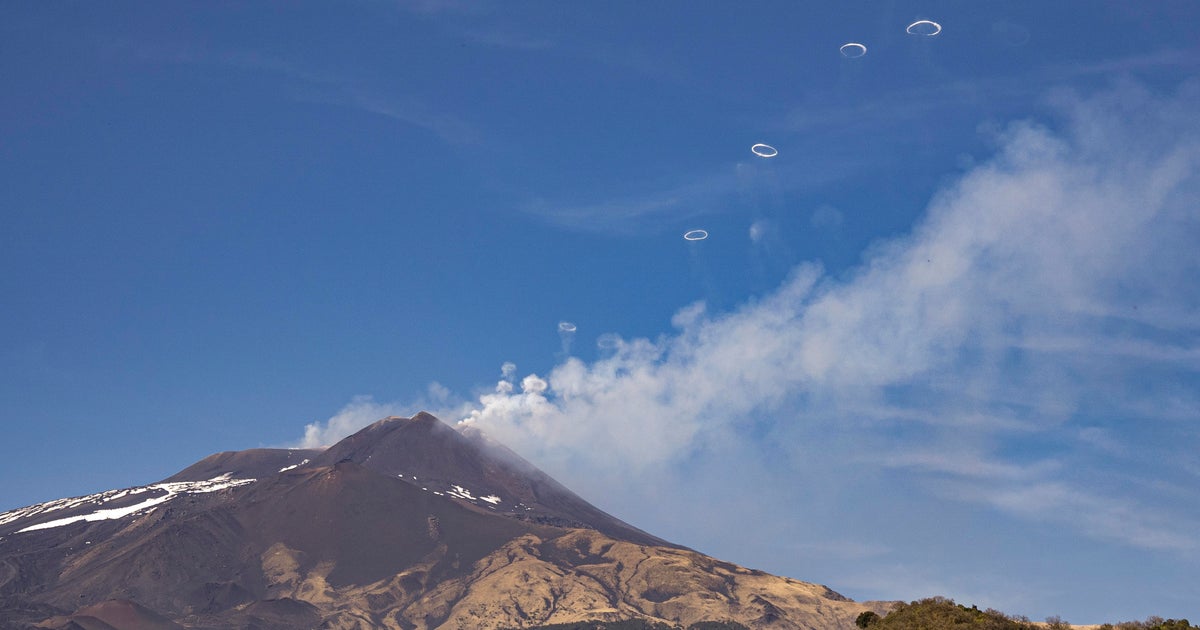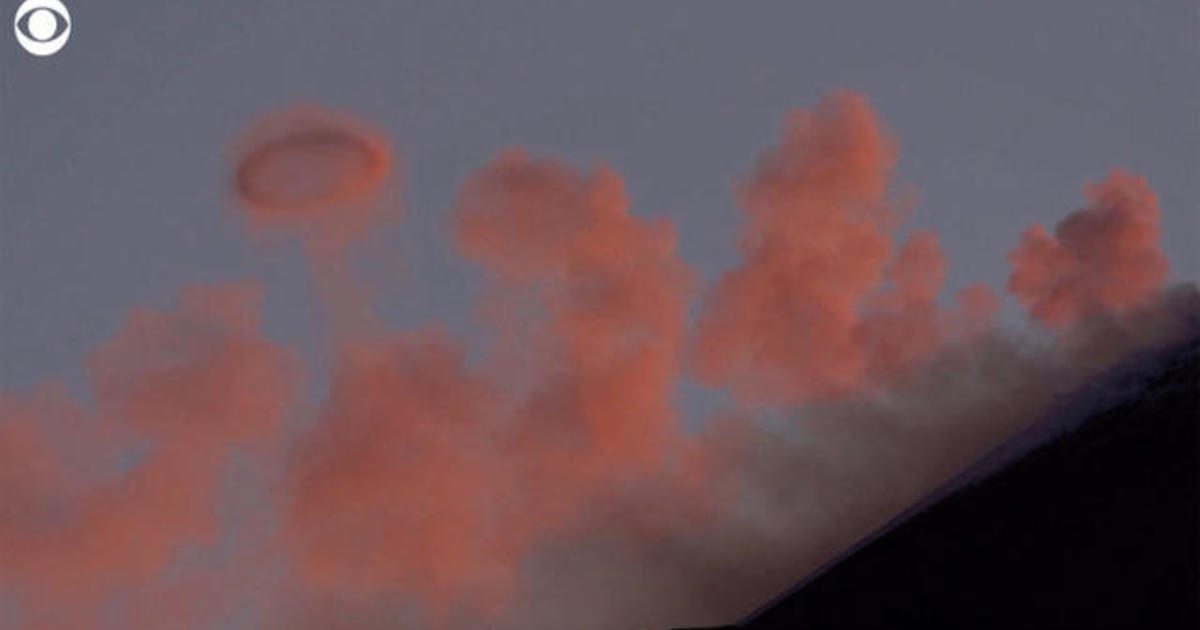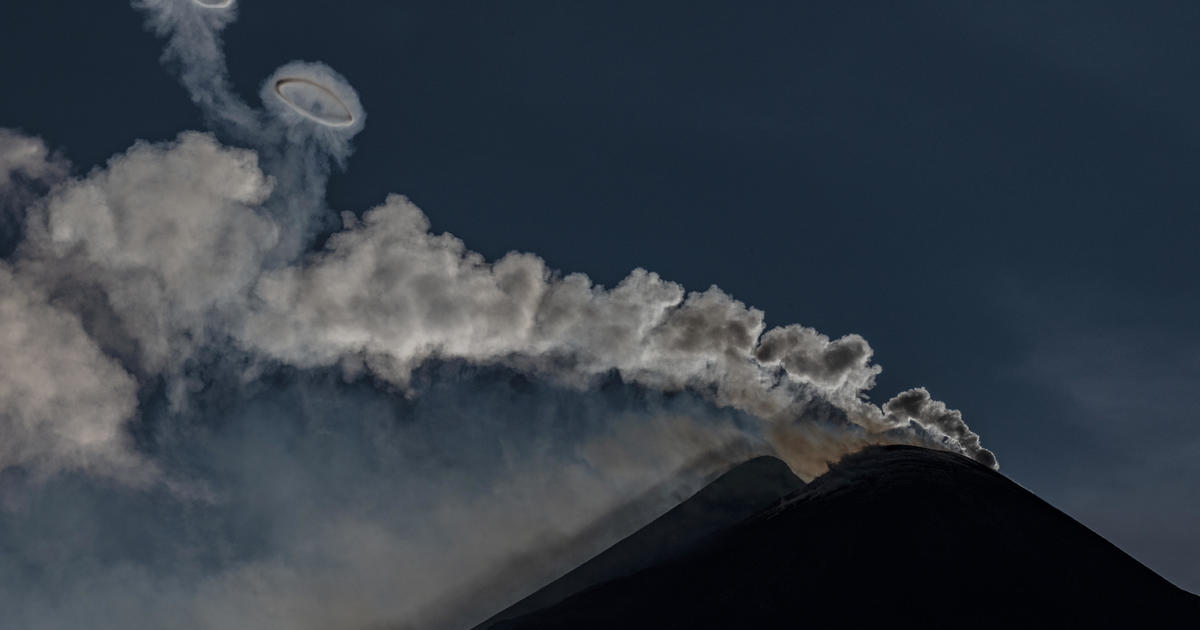CBS News
American tourist dead after suddenly getting sick on Sicily’s Mount Etna, rescuers say

A 55-year-old American tourist died after taking ill during an excursion on the southern side of Mount Etna, in Sicily, Italy’s alpine rescue service said Friday.
Rescuers said the cause of his illness was still unknown, but warned against the risk of high temperatures coupled with humidity that may prove dangerous for tourists who usually have no specific preparation for such excursions.
After being alerted on Thursday afternoon, the alpine rescue team and an air ambulance reached the man in a remote area.
Attempts to revive him were unsuccessful and he was pronounced dead at the scene before his body was transported to the closest service area for transfer to a hospital mortuary, rescuers said.
“Tourists who participate in these excursions should not underestimate the risks related to high temperatures, strong humidity, and the sudden jump in altitude,” said Alfio Ferrara, a spokesman for the alpine rescue service.
“Often they agree to take part in these excursions that reach 2,000-2,300 meters (6,500 to 9,800 feet) in altitude, after spending the day at the beach,” he added.
On Thursday, the temperatures on Mount Etna were estimated at between 77 and 82 degrees, Ferrara said. Italian authorities had declared a red weather alert in seven cities on Thursday, mostly in the central parts of the country.
The heat conditions are aggravated by humidity and could affect healthy people as well as those with health conditions, they warned.
Etna, the highest active volcano in Europe, has seen a significant increase in activity over the past week.
CBS News
Taste-testing “Sandwiches of History” – CBS News

Watch CBS News
Be the first to know
Get browser notifications for breaking news, live events, and exclusive reporting.
CBS News
“Sandwiches of History”: Resurrecting sandwich recipes that time forgot

Barry Enderwick is eating his way through history, one sandwich at a time. Every day from his home in San Jose, California, Enderwick posts a cooking video from a recipe that time forgot. From the 1905 British book “Salads, Sandwiches and Savouries,” Enderwick prepared the New York Sandwich.
The recipe called for 24 oysters, minced and mixed with mayonnaise, seasoned with lemon juice and pepper, and spread over buttered day-old French bread.
Rescuing recipes from the dustbin of history doesn’t always lead to culinary success. Sampling his New York Sandwich, Enderwick decried it as “a textural wasteland. No, thank you.” Into the trash bin it went!
But Enderwick’s efforts have yielded his own cookbook, a collection of some of the strangest – and sometimes unexpectedly delicious – historical recipes you’ve never heard of.
Harvard Common Press
He even has a traveling stage show: “Sandwiches of History Live.”
From the condiments to the sliced bread, this former Netflix executive has become something of a sandwich celebrity. “You can put just about anything in-between two slices of bread,” he said. “And it’s portable! In general, a sandwich is pretty easy fare. And so, they just have universal appeal.”
Though the sandwich gets its name famously from the Fourth Earl of Sandwich, the earliest sandwich Enderwick has eaten dates from 200 B.C.E. China, a seared beef sandwich called Rou Jia Mo.
He declared it delicious. “Between the onions, and all those spices and the soy sauce … oh my God! Oh man, this is so good!”
While Elvis was famous for his peanut butter and banana concoction, Enderwick says there’s another celebrity who should be more famous for his sandwich: Gene Kelly, who he says had “the greatest man sandwich in the world, which was basically mashed potatoes on bread. And it was delicious.”
Whether it’s a peanut and sardine sandwich (from “Blondie’s Cook Book” from 1947), or the parmesian radish sandwich (from 1909’s “The Up-To-Date Sandwich Book”), Enderwick tries to get a taste of who we were – good or gross – one recipe at a time.
RECIPE: A sophisticated club sandwich
Blogger Barry Enderwick, of Sandwiches of History, offers “Sunday Morning” viewers a 1958 recipe for a club sandwich that, he says, shouldn’t work, but actually does, really well!
MORE: “Sunday Morning” 2024 “Food Issue” recipe index
Delicious menu suggestions from top chefs, cookbook authors, food writers, restaurateurs, and the editors of Food & Wine magazine.
For more info:
Story produced by Anthony Laudato. Editor: Chad Cardin.
CBS News
The cream of the crop in butter

Watch CBS News
Be the first to know
Get browser notifications for breaking news, live events, and exclusive reporting.




